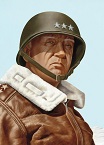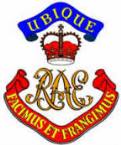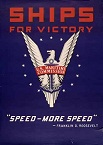ReadyR
Posts: 91
Joined: 5/17/2015
From: Ottawa, Canada
Status: offline

|
This game is a big picture strategic look at the WW2 conflict in the Pacific. The flip side are the stories of individuals who found themselves caught up in it. Just came across this interesting story in today's Globe and Mail. For those who want to view the great photos with the article you can find it here.
https://www.theglobeandmail.com/world/article-two-canadians-a-chinese-admiral-and-a-dramatic-escape-from-hong-kong/
Two Canadians, a Chinese admiral and a dramatic escape from Hong Kong at the height of WWII
After the Hong Kong garrison surrendered on Christmas Day, 1941, Ted Ross, a Canadian civilian working for the British government, had no intention of becoming a prisoner
JAMES GRIFFITHSASIA CORRESPONDENT
HONG KONG
PUBLISHED 2 HOURS AGOUPDATED 23 MINUTES AGO
A band of British, Canadian, Danish and Chinese soldiers broke through enemy lines to escape Hong Kong and get the most senior Chinese officer in the region, Rear Admiral Chan Chak, to his country’s wartime capital in Chongqing.
The men of the Winnipeg Grenadiers stood, sweating in their khakis as they listened to the sounds of battle coming ever closer over the mountains in front of them.
It was Dec. 11, 1941, and Hong Kong was falling. Japan had declared war on Britain, Canada and the United States, launching attacks on Pearl Harbor and British territories across southeast Asia. While few expected Hong Kong to hold out indefinitely, it had been hoped that the colony’s defences would delay the Japanese for weeks if not months, maybe even long enough for a Chinese or British relief force to arrive.
Those hopes were rapidly unravelling. The Canadians had been sent to cover the retreat of the Royal Scots as the defenders pulled back to Hong Kong Island after less than five days fighting on the mainland. During a brief skirmish on the 11th, the Winnipeggers became the first Canadian Army troops to engage in combat during the Second World War. In the coming days, they would engage in some of the fiercest fighting in defence of the colony, just some of the many Canadians who took part in the action.
The Hong Kong garrison surrendered on Christmas Day. By then, about 2,000 soldiers had been killed, including 290 Canadians, with hundreds more wounded. A further 260 Canadians would die in brutal Japanese prisoner of war camps. Thousands of civilians died in the invasion and its aftermath.
More than 1,400 Canadian soldiers endured four years of misery as prisoners of the Japanese, especially in the wake of the battle for Hong Kong. But Ted Ross, a Canadian civilian working for the British government, had no intention of becoming a prisoner. Almost as soon as the Japanese crossed the border on Dec. 8, he began making escape plans.
Originally from Winnipeg, Mr. Ross knew better than most how dire the situation was. He had been a Red Cross driver during the fall of Shanghai, before being posted to Hong Kong in 1940, where he joined the Ministry of Information. Working under David MacDougall, a future colonial secretary for Hong Kong, Mr. Ross put out propaganda to keep the civilian population calm as Japanese artillery and bombers turned the city into what one Canadian defender called a “cauldron of hell.”
Getting off Hong Kong Island wouldn’t be easy, he knew. Japanese troops controlled all of mainland Hong Kong and a large chunk of Guangdong province beyond, and their navy patrolled the Chinese east coast. The closest part of “Free China,” those areas of the country still held by Chiang Kai-shek’s Kuomintang government (as well as pockets of Communist control), was at least 50 kilometres away.
In a letter to his mother, later published in Maclean’s, Mr. Ross wrote that once surrender became inevitable, he and Mr. MacDougall prepared go-bags stuffed with supplies and looked for a way out. At first, they hoped to paddle to China in Mr. Ross’s canoe, but the Japanese captured the bay where it was stored. Then they sought to contract a Chinese junk crew to ferry them to safety, but the men were understandably not keen to hang around, while the two propagandists had to wait until an official surrender had been issued, lest they be considered deserters.
Just as all hope seemed lost, Mr. MacDougall learned of a plan to evacuate the highest ranking Chinese official in the colony, Admiral Chan Chak, using a small squadron of motor torpedo boats (MTBs). Both men knew the admiral well, having worked with him to counter Japanese “fifth columnists” trying to sabotage the defences from within and turn the populace against the British.
Adm. Chan made regular broadcasts exhorting patriotic Chinese to resist the invaders, while his men took a more hands-on approach, as Mr. Ross wrote in a letter to his mother: “Rumour had it that at least three times those on our side discovered the secret meeting places of the fifth columnists at the eleventh hour, and went in with hand grenades and Tommy guns, mowing down as many as four hundred in one raid.”
Hong Kong officials felt a debt to Adm. Chan, but London was also keen to evacuate him to shore up Chinese support in the new front against Japan, fearing that were Chiang Kai-shek to surrender, it would free up hundreds of thousands of Japanese troops to attack British India, Malaya and even Australia.One of the men tasked with preparing the escape was another Canadian, Mike Kendall. Born in Vancouver, he had spent most of his life in Hong Kong. Mr. Kendall worked closely with Adm. Chan to counter fifth column activity at the head of his own paramilitary Z-Force, a secretive group of spies and saboteurs who, it was planned, would operate behind Japanese lines alongside Chinese guerrillas after Hong Kong fell.
At 3:30 p.m. on Dec. 25, Governor Mark Young ordered the surrender of Hong Kong. This was the signal Mr. Ross and the other dozen or so escapees had been waiting for.
“We dashed out onto Queens’ Road, where the trusty old Buick was parked just in front of the King’s theatre,” he wrote later. “There we were joined by the party of four official Chinese … and five British officers who realized the jig was up and were anxious to attempt the escape with us.” Despite the garrison having surrendered, fighting was continuing, and artillery and machine gunfire could be heard around them. “Every once in a while heavy explosions shook the island, as our troops apparently blew up ammunition and oil dumps,” Mr. Ross wrote.
They sped out of the city to the fishing village of Aberdeen, where the MTBs were supposed to be waiting, but the boats weren’t there; they’d been ordered to leave an hour before to avoid being captured. The team found “a flimsy wooden [tender] with a speed of about seven miles an hour” and piled in. Once at sea, they were sitting ducks, and soon came under fire from shore. Adm. Chan and Mr. MacDougall were both wounded and the escape party was soon forced to abandon ship. Adm. Chan, despite having only one leg and a newly injured arm, refused a life jacket, giving it instead to a bodyguard who couldn’t swim. The admiral dived into the water alongside his aide Henry Hsu, a champion swimmer, who helped him to shore.
Also a strong swimmer, Mr. Ross nevertheless hesitated to jump in. He was in a daze, not appreciating the danger of the situation, explained his son Warwick, a documentary producer who has researched the escape extensively. “With all the bullets flying, people shot and drowning, he took his clothes off and folded them neatly with his shoes on top, as if he was coming back,” Warwick Ross said. He would come to regret leaving his shoes once he made it to a nearby island, cutting his feet up on the jagged rocks.
On shore, the survivors took stock as they sheltered from the continuing barrage of Japanese bullets. Dressed in just his underwear and covered in oil from the swim, Mr. Ross set out over the island, eventually spotting “what looked like three launches tied up in a little cove on the sheltered side.”
Another member of the party had also spotted the boats, the missing MTBs, and began swimming out to them. As he was pulled aboard, he shouted “there are 10 chaps following, being machine-gunned.” Hearing there were 10 Japanese “following with machine guns,” and seeing a number of men coming over the hill, the troops on the MTB promptly opened fire, almost killing the very people they had been sent to rescue.
Eventually, the misunderstanding was cleared up and the survivors, including a bleeding, hopping Adm. Chan, were loaded onto the boats. “We pushed off about 10 p.m. and the throb of those powerful motors was music to our ears,” Mr. Ross wrote.
According to a biography written by his two sons, Adm. Chan recalled that “after I boarded the boat, a British officer offered me a cup of coffee … and showed me the map to discuss the escape route.” The decision was made to land at Nanao, a tiny inlet in Mirs Bay that is now part of Shenzhen. Ashore, Adm. Chan, by now fully in command of the escape, ordered the MTBs to be scuttled so as not to give them away.
“That was really hard for [the crew], those boats were their home,” said Richard Hide, creator of the Escape From Hong Kong website whose father Buddy was a petty officer on one of the MTBs. “They’d been living on them for two years.”
A photo taken on Dec. 30, 1941 shows Mr. Chan, flanked by more than 60 members of the escape party, sitting, his arm in a sling, with the flags of the Republic of China and the United Kingdom over his lap.
The hardships were only beginning for the sailors, as the party – now assisted by local smugglers allied with the Kuomintang – began marching overland to Free China. In this they were led by the smugglers and Mr. Kendall, the Canadian commander of Z-Force and a “pretty hard guy to deal with,” in Mr. Hide’s words. While the navy men were all tough sailors, they weren’t marines, and struggled under the brutal pace set by a guerrilla leader desperate to get back into the fight.
“My job was to get through the Japanese lines and into Chinese territory, which I was able to do,” the taciturn Mr. Kendall said in an oral history recorded by the University of Victoria in 1968. “In fact, we never even saw the Japanese.”
Finally, exhausted and filthy, the escape party – now grown significantly from the original small team who made a break from Hong Kong Island – made it to Huizhou, the closest city in Free China. There, they received a hero’s welcome, much needed food and medical attention, and a brief rest. A photo taken on Dec. 30 shows Adm. Chan, flanked by more than 60 members of the escape party, sitting, his arm in a sling, with the flags of the Republic of China and Britain over his lap.
After Huizhou, the party began splitting up, with some remaining to fight the Japanese, while others made for Chongqing, Chiang Kai-shek’s wartime capital. It was from there that Mr. Ross and Mr. MacDougall were able to get intelligence on the fall of Hong Kong to British high command, and the story of the escape to the world’s press. (Mr. Kendall, misidentified as an American, was quoted in The New York Times assuring readers that all U.S. citizens in Hong Kong were safe).
Canadian Armed Forces recruitment poster titled, "Remember Hong Kong. The Royal Rifles of Canada Will Be Reconstituted One Hundred Per Cent. Follow Their Glorious Example. Enlist now".COURTESY OF BEAVERBROOK COLLECTION OF WAR ART / CANADIAN WAR MUSEUM (CWM 19700036-024)).
The war in the Pacific was not going well for the British. The loss of Hong Kong was followed by the surrender of Singapore in February, 1942, and the fall of Yangon weeks later, as witnessed by some of the escapees, who having trekked from China to Burma, found themselves beating yet another retreat.
The escape gave newspapers in Britain and Canada something to focus on that wasn’t defeat, said Kwong Chi Man, a professor of history at Hong Kong Baptist University. It also presented a useful story of British and Chinese forces working together just as London was trying to get Chongqing to aid in the defence of Burma.
“This was the very beginning of the Sino-British co-operation against the Japanese,” he said. “So anything about a joint operation, even in the context of a defeat, was important to highlight.”
In Canada, the focus was more on the woeful conditions in the prisoner of war camps – “Remember Hong Kong” became a popular recruiting slogan – than the role of four Canadians in the escape. (As well as Ross and Kendall, there was also sailor Alan Marchant and MTB sub-lieutenant Arthur Gee).
After the war, popular sentiment turned to anger over how the Canadian defenders were scapegoated by some British officials for the loss of the colony, something that rankled Mr. Ross and twisted the actual situation on the ground, Dr. Kwong said.
“The Canadian troops faced an enemy force that was vastly superior in numbers. They were sometimes asked to launch frontal assaults against an enemy holding the high ground with little to no artillery support,” he wrote in a recent paper. “Although the Canadian troops were sometimes blamed for the defeat, it is unlikely that other units of the Hong Kong garrison could have done better.”
Mr. Kendall, who ended the war as a Lieutenant Colonel, said many people in Hong Kong had been surprised the Canadians were sent at all. This feeling soon turned to horror when “we discovered that they were so ill-equipped.” “There was no preparation, no training, no nothing,” he said. “They did a good job, but they didn’t have a hope.”
|
 Printable Version
Printable Version









 New Messages
New Messages No New Messages
No New Messages Hot Topic w/ New Messages
Hot Topic w/ New Messages Hot Topic w/o New Messages
Hot Topic w/o New Messages Locked w/ New Messages
Locked w/ New Messages Locked w/o New Messages
Locked w/o New Messages Post New Thread
Post New Thread